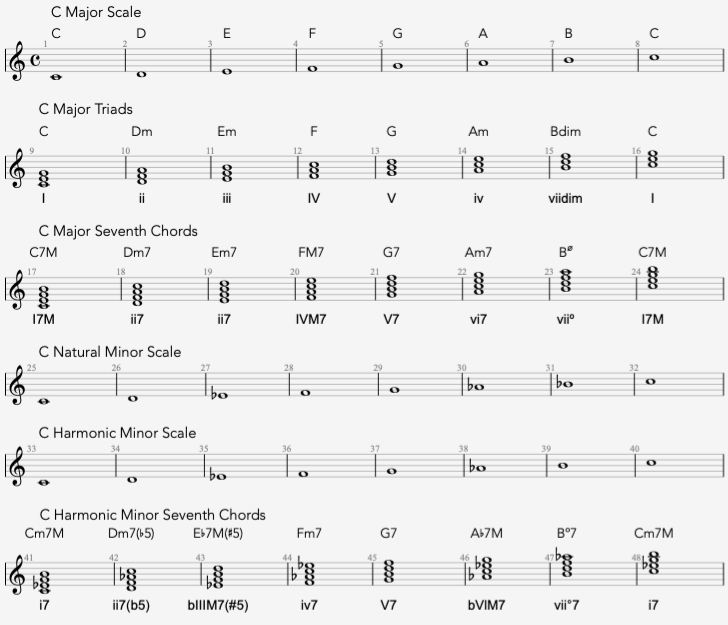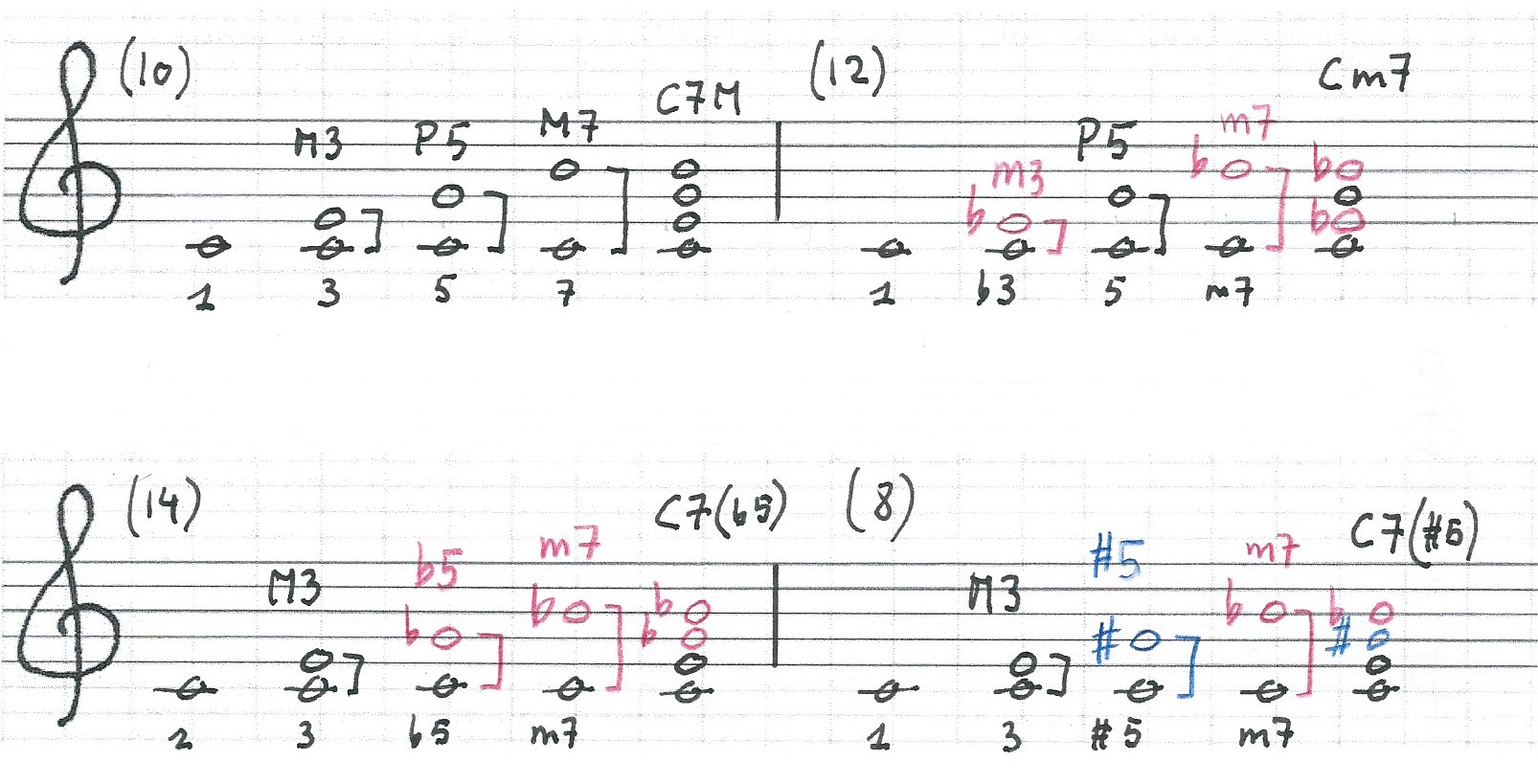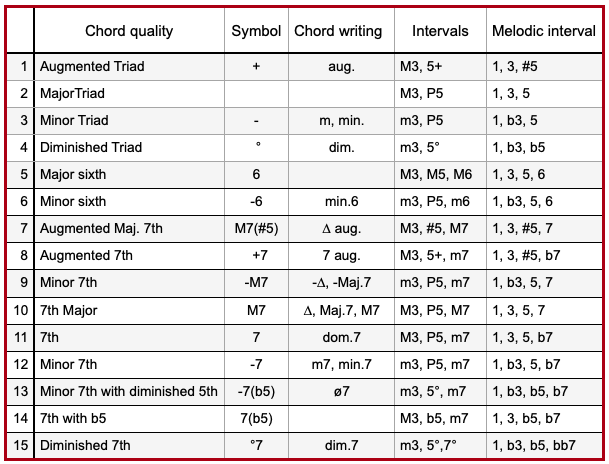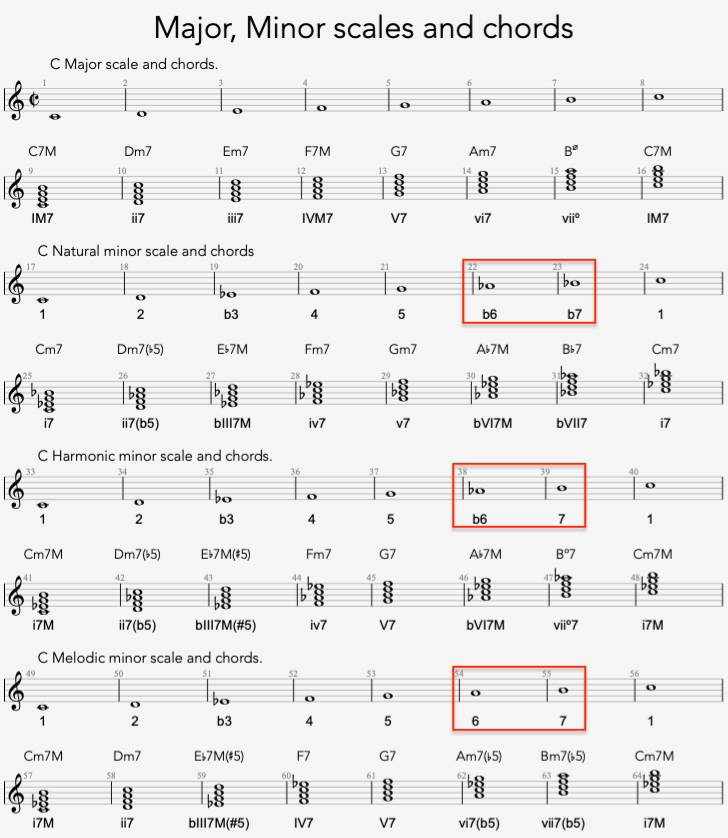Introduction to chords
A basic chords knowledge
We will try here to understand how chords are constructed. We have seen in the Intervals section the name of those distances. Now, we have those intervals played simultaneously. Pick two or more strings at the same time and you will play a chord. The purpose here is not to try to know the name of all chords by heart but rather to understand how to construct them. Another notion to take into account is chord degrees. See also, "Romain Numerals" showing where a chord stands. (I- first, II- second, VI- sixth position) and so on. This is crucial when it comes to analyzing chord functions. It is also the rule "but I must admit I don't always follow it" to write small letters for minor chords and capital letters for major ones. Example: iv7= the minor seventh chord on the fourth position. VI7= the Major chord on the sixth position.
Scale Degree Names
Construction of Chords
Now, let's start off with C major chord. C will be the root of the chord, namely the Tonic (1). Then we will use three notes above the tonic: a Third (3), a Fifth (5)and a Seventh (7). I would also advice you to examine thoroughly the table below "Type of chords". The first example is from row 10. Then row 12, 14 and 8.
Please note that minor seventh is not written as such. Only major seventh is mentioned (M7).
Chord construction
Chord Qualities
Harmonizing the major scale and the minor scales
Below is a four notes harmonization of a C major and C minor scales. As you can see, there is one major and three minor scales, namely C natural minor, C Harmonic minor and C Melodic minor. Please note the Roman numerals below the chords. That shows the chord degrees. Whatever the key we are in, the name of the chords will change but not the chord labels. For instance (V7) or simply (V) shows the type of a chord in the fifth position in any tonalities, not the name of a chord. And so for the twelve other chords of the circle of fifths. This is particularly helpful when analysing a chords progression. We know that (V7) is a dominant seventh chord, (IM7) is Tonic, (VIIº) is also a dominant chord and so on.
Now see G7, (V7) chord in both major and minor modes. It is a Major chord with a minor seventh (M3, P5, m7) Called Dominant seventh. Conclusion: all dominant seventh chords are Major with a minor seventh, regardless of the key. Expected in natural minor, it is a minor seventh chord (Gm7) and so as no dominant function.
Dominant seventh chords have a diatonic function.
- Since it is always placed on the V7 degree, a dominant seventh can determines a key signature.
- E7 chord shows that we are in the key of A, similarly, with D7 we are in G and so...
- As a rule, all chords that have the Triton are Dominant chords.
- A good reason to learn the Circle of Fifths. (circle of Fifths)
Chord degrees summary
Scales and Chords in C major, C natural minor, C Harmonic minor and C Melodic minor
Please have a close look at the minor scales. Natural, Harmonic and Melodic scales, more particularly the 6th and 7th degrees.







